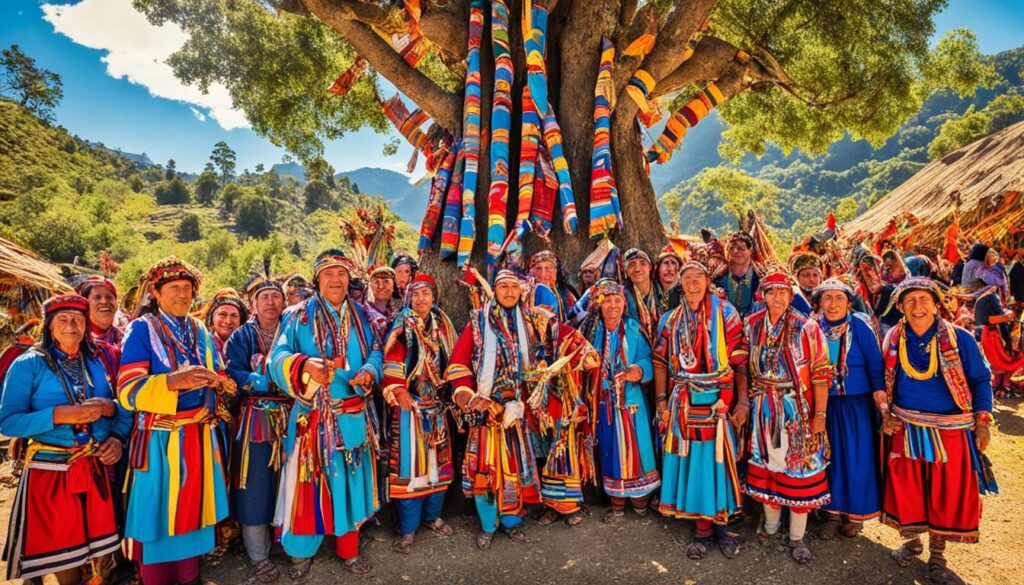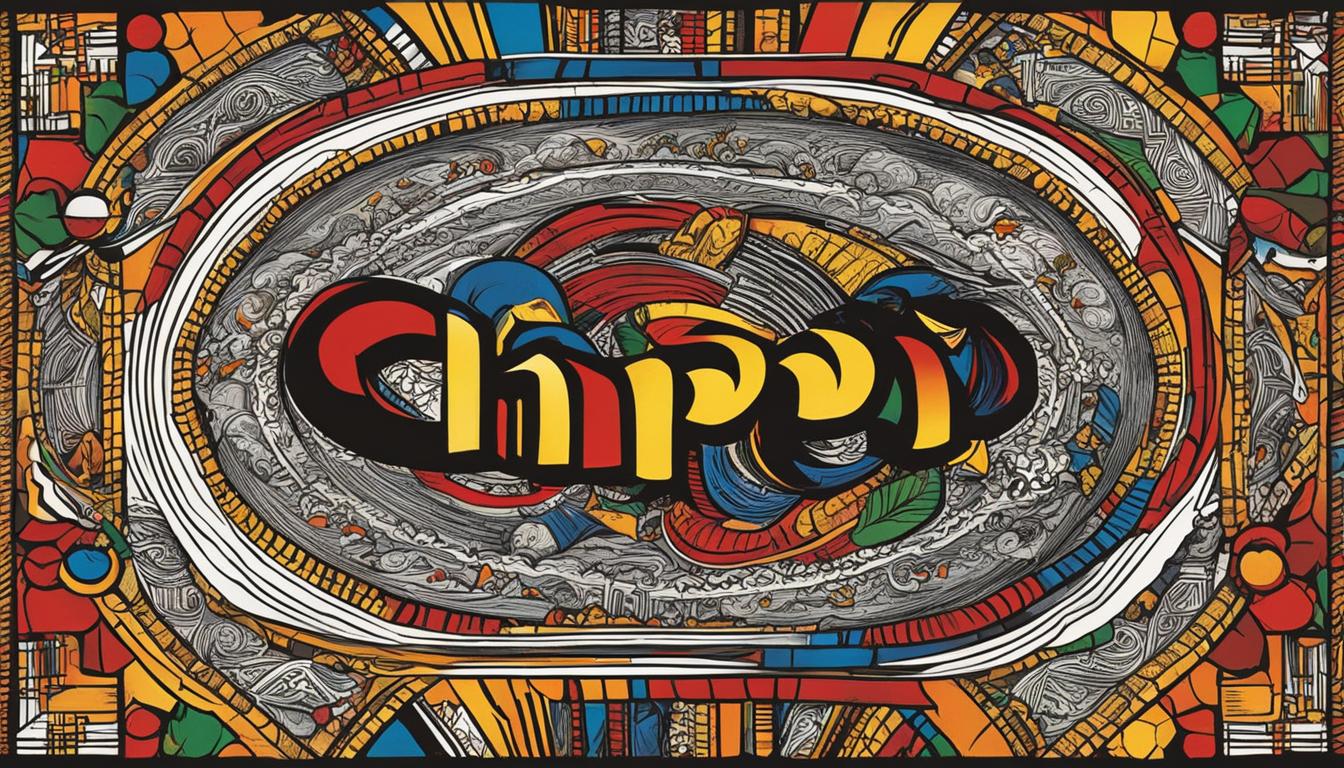When we think about languages, we often think of globally recognized ones like English, Spanish, or Mandarin. But tucked away in the Zavala region of southern Mozambique, the Chopi people have been speaking Chichopi for centuries. This fascinating Bantu language is not only a means of communication for the Chopi people but also a reflection of their rich cultural heritage. Let’s dive deeper into the world of the Chopi people and explore the beauty of their language and traditions.
From their vibrant music and traditional dancing to their animistic belief system, the Chopi people have a lot to share with the world. Join us as we discover the unique lifestyle, beliefs, and connections of this remarkable community in Mozambique.
Location and Lifestyle of the Chopi People
The Chopi people reside along the picturesque southern coast of Mozambique, specifically between Chidenguele in the province of Gaza and Inharimme in the province of Inhambane. Within this region lies the Zavala district, home to the vibrant town of Quissico that serves as the thriving center of the Chopi community.
The Chopi people lead a predominantly rural lifestyle, deeply connected to the land and its resources. Their livelihoods revolve around subsistence agriculture, cultivating essential crops like cassava, corn, and peanuts. Furthermore, the coastal expanse that envelopes their dwellings offers abundant coconut palms and cashew trees, providing additional sustenance and economic opportunities.
Fishing also plays a significant role in the lives of the Chopi people due to the proximity of the Mozambican coast. With rich marine ecosystems at their doorstep, they engage in fishing activities that contribute to their livelihood and overall sustenance.
Indigenous and rural, the lifestyle of the Chopi people reflects a deep-rooted connection with their environment and a harmonious coexistence with nature.
Beliefs and Cultural Practices of the Chopi
The Chopi people hold deep-rooted beliefs and engage in various cultural practices that are integral to their way of life.
Animistic Belief System
The majority of Chopi people adhere to a traditional animistic belief system. This system revolves around the belief that spirits animate the natural world and influence human affairs. The Chopi people believe that spirits reside in elements such as trees, rivers, and mountains.
“The Chopi people have a profound connection with the spiritual realm,” explains Dr. Malaika Harper, an anthropologist specializing in African cultures. “Their animistic beliefs shape their worldview and guide their interactions with the environment.”
Local witchdoctors and healers play a vital role in the Chopi community as spiritual guides and intermediaries between humans and spirits. These individuals are deeply respected and sought after for their spiritual authority.
Ancestor Worship and Appeasement
Ancestor worship is an essential aspect of Chopi cultural practices. The Chopi people believe that their ancestors continue to play a significant role in their lives and can intercede on their behalf. Ancestors are revered and appeased through rituals and offerings.
Animal sacrifices play a prominent role in seeking favor with spirits for various blessings, including good crops, health, peace, and success. Sacrifices are often made during significant community events and rites of passage.
Traditional Rituals for Spiritual Protection and Success
To seek spiritual protection and success in different aspects of life, the Chopi people perform specific rituals. One such ritual involves the tying of ropes, strings, and cords around the body, particularly at the neck, waist, and wrists. These symbolic acts are believed to ward off negative spirits and attract positive energies.
Integration of Christianity and Traditional Practices
While the majority of Chopi people adhere to their animistic belief system, there are also those who belong to the African independent church called Zione. The Zione church combines teachings from the Old Testament of the Bible with traditional purification rituals, baptisms, and exorcisms. This integration reflects the ongoing cultural adaptability and syncretism within Chopi society.

| Key Beliefs and Practices | Significance |
|---|---|
| Animistic belief system | Shapes the Chopi worldview and influences their interactions with the environment |
| Local witchdoctors and healers | Hold spiritual authority and act as intermediaries between humans and spirits |
| Ancestor worship and appeasement | Reverence for ancestors and seeking their intercession for blessings |
| Animal sacrifices | Seeking favor with spirits for various aspects of life |
| Rituals for spiritual protection and success | Symbolic acts to ward off negative spirits and attract positive energies |
| Integration of Christianity and traditional practices | Combining Christian teachings with traditional rituals |
Language and Cultural Connections of the Chopi
The Chopi people have a distinct language known as Chichopi, which belongs to the Bantu language group. Chichopi is part of the Niger-Congo language family, specifically the Southern Bantoid branch of Bantu languages. This language is closely related to Tsonga, another Bantu language spoken in Mozambique and South Africa.
The connection between the Chopi language and Tsonga language stems from their shared linguistic roots within the Bantu language family. The similarities in vocabulary, grammar, and pronunciation demonstrate the close bond between these two languages.
The cultural connections of the Chopi people extend beyond language. They share common cultural practices, traditions, and customs with other Bantu-speaking groups in the region, such as the Tsonga and Shangaan ethnic groups. These connections are shaped by historical interactions, migrations, and the cultural exchange that has taken place over generations.
Shared Cultural Practices
A common cultural practice among the Chopi, Tsonga, and Shangaan people is the use of music and dance as expressions of their heritage. Traditional instruments, such as the timbila, play a significant role in these cultural practices.
“The timbila is a xylophone-like instrument made from wooden slats and resonators. It is played with mallets and produces a unique sound that is central to the traditional music of the Chopi, Tsonga, and Shangaan people.”
These shared cultural practices reinforce the cultural identity and unity among the Bantu-speaking communities in the region.
Chopi Language and Cultural Diversity
The linguistic and cultural diversity within the Chopi community reflects the broader diversity found in Mozambique. While Chichopi is the primary language spoken by the Chopi people, their exposure to other Bantu languages has contributed to their cultural richness and adaptability.
Through intercultural interactions, trade, and social exchanges, the Chopi people have embraced and integrated diverse elements into their language and traditions. This diversity highlights their openness to cultural influences and their ability to maintain strong connections with neighboring communities.
| Language | Location | Shared Features |
|---|---|---|
| Chopi | Zavala region, Mozambique | – Bantu language\n- Timbila instrument |
| Tsonga | Mozambique, South Africa | – Bantu language\n- Timbila instrument |
| Shangaan | Mozambique, South Africa, Zimbabwe | – Bantu language\n- Timbila instrument |
The table above highlights the shared features among the Chopi, Tsonga, and Shangaan languages. It illustrates how these languages and cultures have coexisted and influenced each other, creating a vibrant tapestry of traditions and expressions.
By understanding the language and cultural connections of the Chopi people, we gain valuable insights into the complex tapestry of Mozambique’s linguistic and cultural diversity. These connections serve as a testament to the richness and resilience of the Bantu-speaking communities in the region.
Conclusion
The Chopi people in Mozambique possess a culturally rich heritage, which encompasses their language, beliefs, and customs. Their unique traditions significantly contribute to the linguistic diversity and ethnic identity of Mozambique. Notably, the Chopi are recognized for their captivating traditional music and dance performances, featuring the melodious sounds of the timbila instrument.
Although the majority of the Chopi people adhere to traditional animistic beliefs, there are individuals who blend these practices with Christian teachings. This dynamic approach to spirituality exemplifies the cultural fluidity and adaptability within the Chopi community. Maintaining the vitality and understanding of the Chopi language and culture is essential for preserving the cultural diversity of Mozambique.
The Chopi culture serves as a testament to the linguistic and ethnic tapestry of Mozambique. Embracing and celebrating the traditions, arts, and customs of the Chopi people not only showcases their unique heritage but also fosters a deeper appreciation for the rich cultural mosaic present within the country. Through continued efforts to preserve and promote the Chopi language and culture, Mozambique can further strengthen its position as a country that values and cherishes its linguistic diversity and ethnic identities.
FAQ
What language do the Chopi people speak?
The Chopi people speak Chichopi, a Bantu language primarily spoken in the Zavala region of southern Mozambique.
Is Chichopi the only language spoken by the Chopi people?
No, along with Chichopi, the younger generation also speaks Portuguese, the official language of Mozambique.
What language family does Chichopi belong to?
Chichopi is part of the Niger-Congo language family, specifically the Southern Bantoid branch of Bantu languages.
How are the Chopi people’s beliefs and cultural practices?
The majority of the Chopi people adhere to a traditional animistic belief system, with local witchdoctors and healers holding spiritual authority in the community. They also worship and appease their ancestors through rituals and sacrifices.
Are there any other religious affiliations among the Chopi people?
Yes, some Chopi people also belong to the African independent church called Zione, which combines teachings from the Old Testament of the Bible with traditional purification rituals, baptisms, and exorcisms.
What is the significance of the Chopi language?
The Chopi language, also known as Chichopi, is an important part of the Chopi people’s cultural heritage. It contributes to the linguistic diversity of Mozambique and reflects the ethnic identity of the Chopi people.
What are the cultural connections of the Chopi people?
The Chopi people have cultural connections with other Bantu-speaking groups in the region, such as the Tsonga and Shangaan ethnic groups. Historical interactions and migrations have influenced their cultural and linguistic diversity.
What are the traditional music and dance forms of the Chopi people?
The Chopi people are known for their traditional music and dance, with the timbila instrument being a prominent feature. It is renowned for its artistic expression and is an integral part of Chopi cultural performances.
